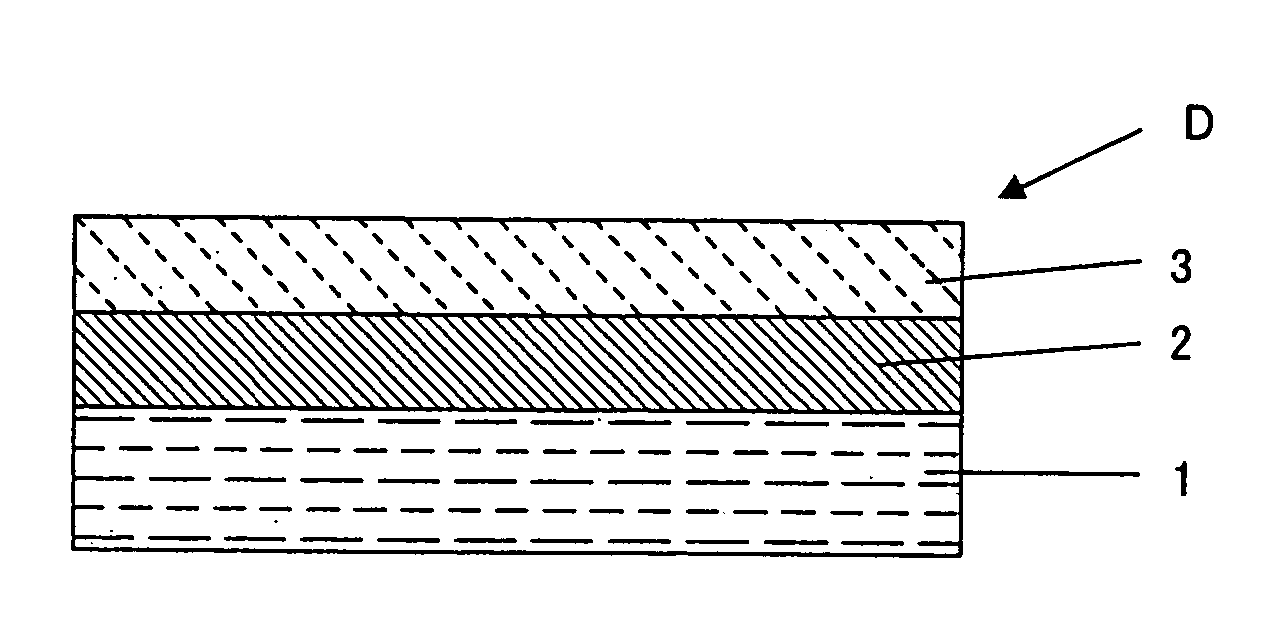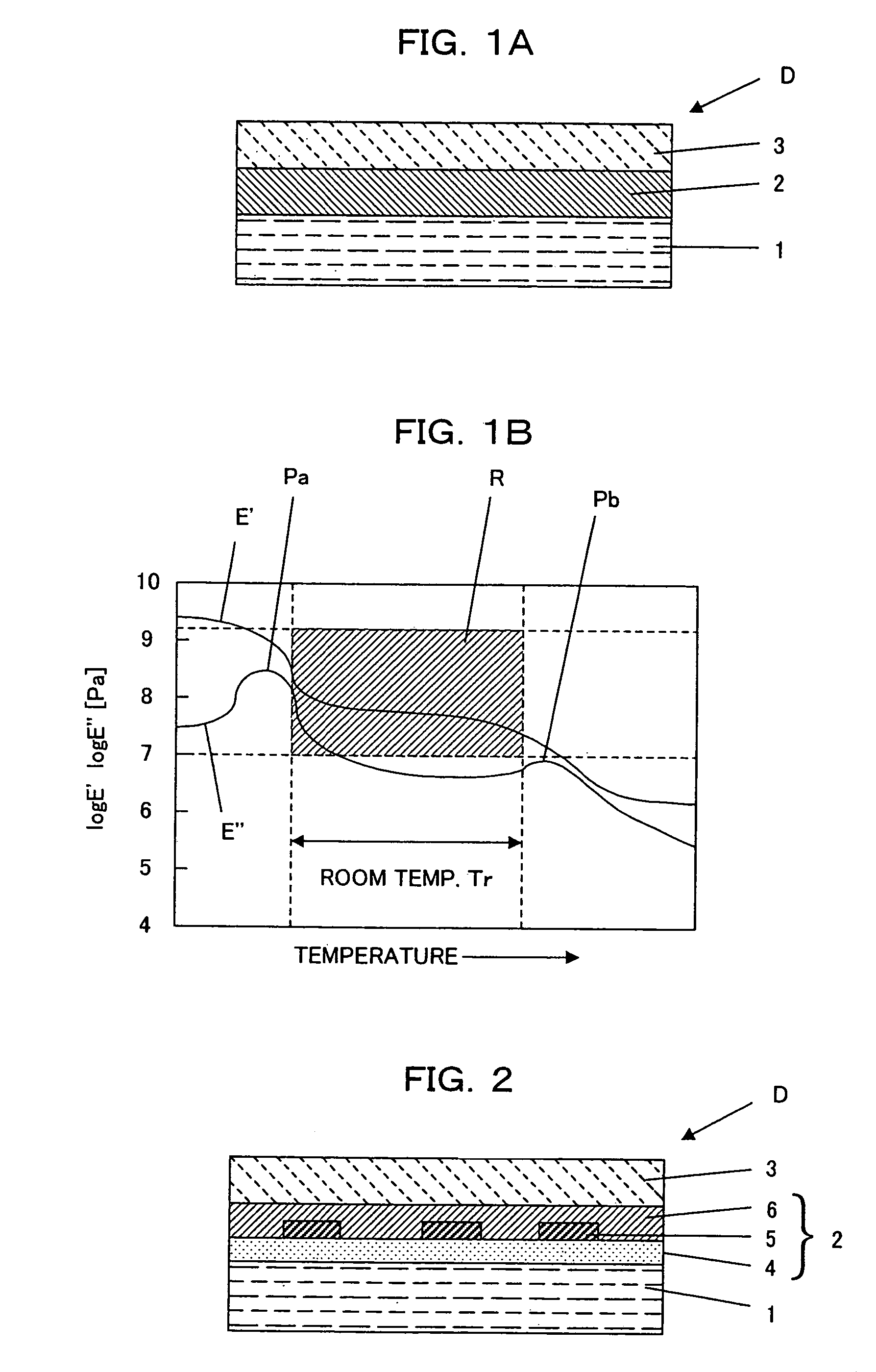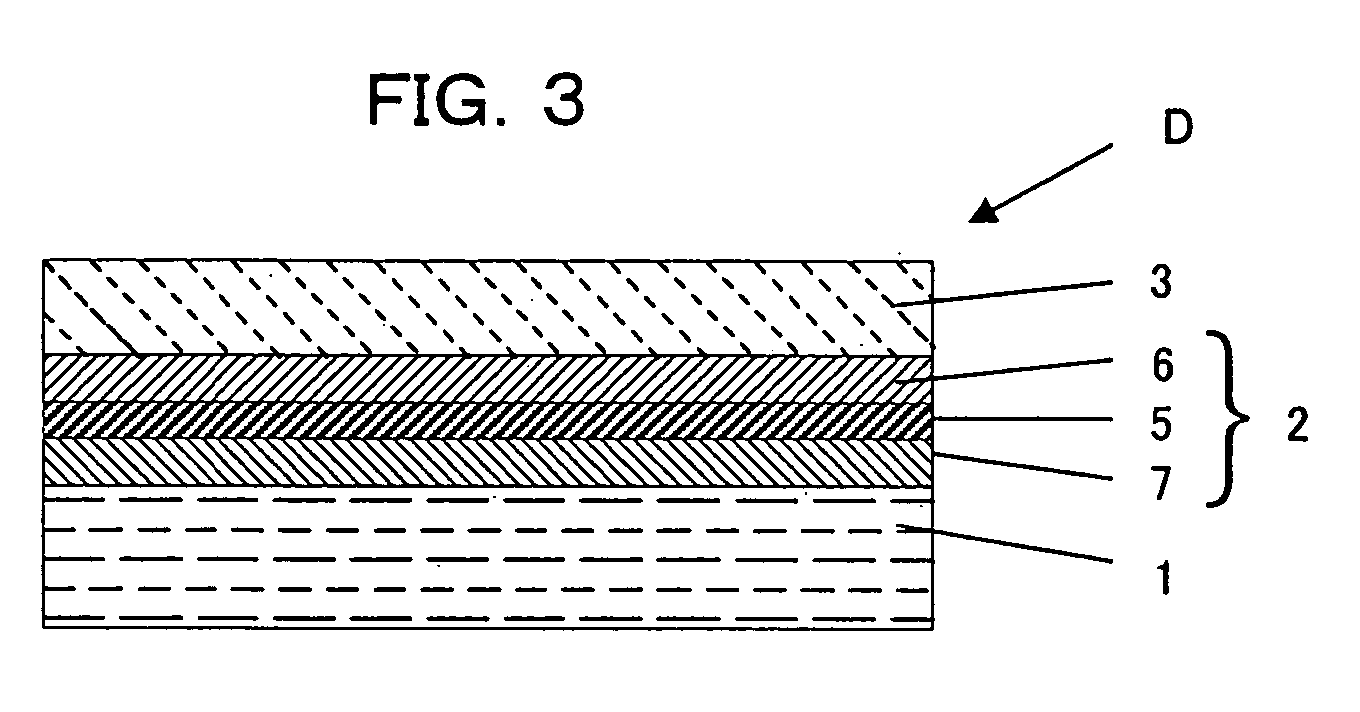Decorative material
a technology of decorative materials and protective layers, applied in the field of decorative materials, can solve the problems of difficult wear of the protective layer on the surface, and achieve the effects of improving abrasion resistance, excellent abrasion resistance, and excellent abrasion resistan
- Summary
- Abstract
- Description
- Claims
- Application Information
AI Technical Summary
Benefits of technology
Problems solved by technology
Method used
Image
Examples
example 1
[0080]For test and evaluation, decorative material D, which will be processed to a decorative paper of a structure shown in FIG. 3, was prepared as follows.
[0081]First, on one side of an unbleached tissue paper (unimpregnated paper) having a weight of 30 g / m2 as a substrate 1, an intermediate layer 2 comprising three layers, a white colored solid layer 7 (it is also a full-surface solid layer in a pattern layer), a pattern layer 5 having a full-surface red pattern and a primer layer 6, was formed through applying the layers with a Meyer bar sequentially from the substrate in application amounts (on solid basis, hereafter the same) of 5 g / m2, 2 g / m2 and 2 g / m2, respectively. The three layers contained the same resin component. The resin used was, as shown in Table 1, a two-component curable urethane resin resulting from mixing 3 parts by weight of 1,6-hexamethylene diisocyanate (HMDI) adduct as an isocyanate-based crosslinking agent and 100 parts by weight of a main component compris...
example 2
[0084]A decorative material was obtained in the same manner as Example 1 except that in Example 1 the resin of the intermediate layer having the three layer structure serving as a sealer layer, a pattern layer and a primer layer was changed to an aqueous (saturated) polyester resin [aqueous PES] and no crosslinking agent was used. A peak temperature of the loss elastic modulus E″ of the above resin at temperatures under room temperature is −31° C. and there are no peaks over room temperature. A value of storage elastic modulus E′ in the room temperature range was 2×107 to 2×108 Pa.
example 3
[0085]A decorative material was obtained in the same manner as Example 1 except that in Example 1 only the main component was used and a crosslining agent was not used as a resin of an intermediate layer as shown in Table 1. A peak temperature of the loss elastic modulus E″ of the resin (the non-crosslinked thermoplastic resin) at temperatures under room temperature became −10° C. and a peak temperature over room temperature became 6° C. A value of storage elastic modulus E′ in the room temperature range was 2×107 to 2×108 Pa.
PUM
| Property | Measurement | Unit |
|---|---|---|
| thickness | aaaaa | aaaaa |
| temperature | aaaaa | aaaaa |
| temperature | aaaaa | aaaaa |
Abstract
Description
Claims
Application Information
 Login to View More
Login to View More - R&D
- Intellectual Property
- Life Sciences
- Materials
- Tech Scout
- Unparalleled Data Quality
- Higher Quality Content
- 60% Fewer Hallucinations
Browse by: Latest US Patents, China's latest patents, Technical Efficacy Thesaurus, Application Domain, Technology Topic, Popular Technical Reports.
© 2025 PatSnap. All rights reserved.Legal|Privacy policy|Modern Slavery Act Transparency Statement|Sitemap|About US| Contact US: help@patsnap.com



